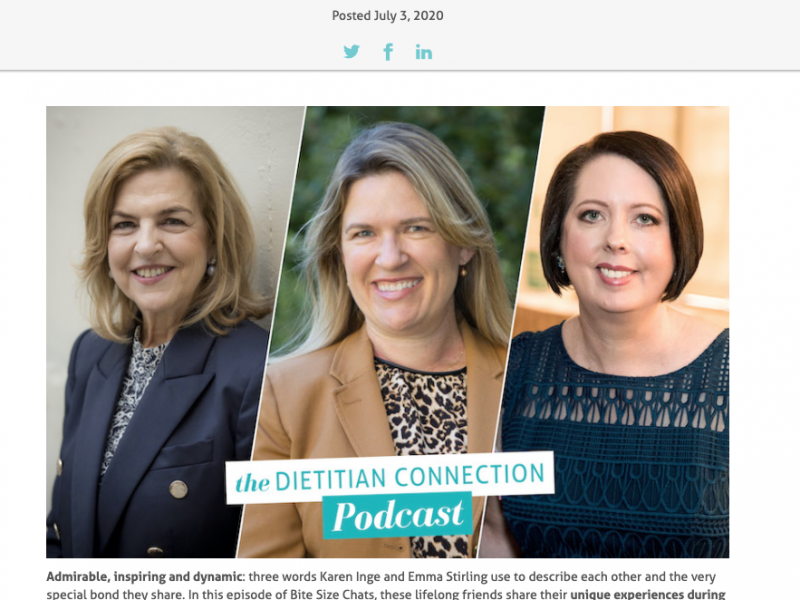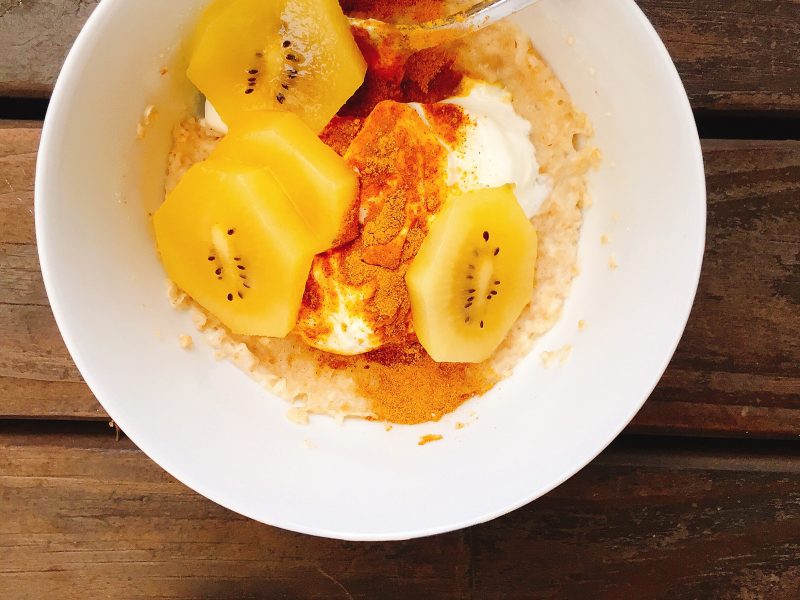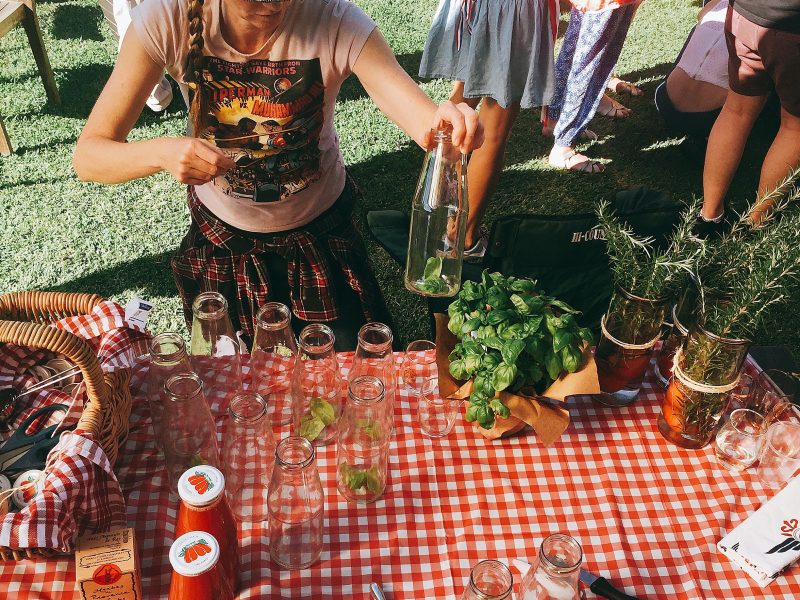Did you know it’s Good Food Month? And yet again Australia is hosting some of the world’s top chefs, like Rene Redzepi from Noma in Copenhagen. Rene as I have shared with you before is passionate about terroir and exploring new bugs, moss, bark and other flora as part of the new Nordic cuisine. And so is Ben Shewry from Attica here in Melbourne who encourages us to tap into Australian terroir and forage for new cuisine. But what is Australian terroir, exactly?
About our expert:
Despite being a born and bred city-girl, Accredited Practising Dietitian Elisa is currently living and working in outback NSW for an Aboriginal health service. This suits her perfectly, as, along with her passion for food, she has a passion for exploring and unravelling different cultures and their approaches to food. She loves sharing all she is learning about these favorite two topics on her blog www.dietitianonamission.me
Ironically, as an Australian dietitian, I know very little of native Australian food, though one benefit of living in the outback is the opportunity to learn more. The more I learn, the more I realise that this genre has stories to tell and secrets to share. Ancient stories of traditional bush tucker- eaten for thousands of years. And nutrition secrets of surviving Australia’s harsh conditions and more importantly, nourishing those who lived off the land.
Have you tried?
The desert superfruit – Quandongs
Apart from having a name that leaves people saying “pardon?” these are an amazing little fruit. They’re also known as the desert/wild/native peach, as they’re the size of a small peach, with a big stone inside. Luckily nature has made the most of the little flesh available. Gram for gram they have double the energy and protein of a peach, nearly three times the carbohydrates, and are significantly higher than oranges in Vitamin C. Very beneficial, considering they helped sustain people in times of food scarcity. On top of all this, their kernel is very high in unsaturated fats, and traditionally is not only eaten, but ground up and used as a hair conditioner. Along with the quandong leaves, the kernel has also been used for medicinal properties. Definitely no waste with this fruit!
Today, quandong trees are grown in outback backyards and wildly; their fruit seldom eaten due to the bitterness we’ve become less accustomed too. However, if you look hard enough, you can find quandong jams, pies or icecream in gourmet shops.

The original ancient grain bread – Johnny cakes
According to Wikipedia, Johnny Cakes are an American dish made of cornmeal and water, however they have been made by Indigenous Australians for thousands of years. Pre white settlement, this was a lengthy procedure which involved gathering native seeds and grinding them into flour. The effort required and scarcity of the seeds meant the dish was an occasional and special food. Today, elders have been known to never throw bread out because of what this symbolises.
This dish was adapted post white settlement, when Aboriginal people were moved from their traditional hunter-gatherer lifestyle to one on missions and stations, and Australia’s fields became filled with wheat crops. White flour replaced the traditional flour, and as this required much less effort to make, Johnny cakes became a staple in Aboriginal people’s diet. To understand how this simple bread of flour and water differs to others of its kind, one Barkindji woman explained, “Johnny Cakes are cooked on the coals or in a frypan, damper is baked in the oven, and scones have milk added”.
Our national emblem – kangaroo
For thousands of years this iron rich, lean meat has been a staple in Indigenous people’s diet. You can check out the recent Scoop Nutrition post for the full nutrition profile of kangaroo meat. I’m told the roo bought in Woolies today often won’t be touched by many Aboriginal people (‘blue’ roo is often sold commercially, whereas Aboriginal people will only only hunt the ‘red’). I often see them cook up roo curry, so this may be a way you’d like to try it in your dinner repertoire?

Just scratching the red earth surface…
I have been speaking with a Paakintji man, and we’ve complied a list of commonly eaten bush food from this region (far west NSW). Naturally, common bush tucker varies across Australia so I will only speak for this region. I haven’t included the Paakantji (or Baakantji) names, as we were not sure of the correct spelling so I just used the common English version of the names (to spell the names wrong would be offensive to Paakantji people).
Wild Banana Vine – an edible fruit which grows on a vine and it has yams for roots that carry a lot of water. The flesh can be eaten off the skin of the fruit and there is a corn cob looking centre that is wrapped in small white fibres. These white fibres can be dangerous if not removed before eating the centre. The yams are eaten raw or cooked, and the fruit eaten mostly cooked.
Wild Plum – like a small plum, very dark in colour and definitely rich in anthocyanins antioxidants.
Wild Lime – small in size, light green and similar to a grape. Eaten whole (skin and flesh) they are packed with vitamin C.
Wild Orange – doesn’t look much like an orange. It has a lot of seeds and a strong smell mixed between guava and orange.
Mulga Apple – a small, green and round fruit with soft spikes and a woody flesh.
Ruby Salt Bush – small red berries of this plant are eaten and are high in vitamin C – Paakantji people told the early settlers to eat it when they were suffering from scurvy.
Quandong – outside flesh is eaten, whilst the seeds MUST be dried and cured over a long time before they can be cracked in half and a nut like inside can be eaten.
Wild Spinach – a lot smaller that European version, and grows only after rain or floods.
Milk Thistle – considered a common garden weed these days, the young flowers can be eaten as well as the stalk and leaves.
Native mistletoe – sweet berries with soft gooey inside are nick named “snotty goggle”.
Wattle seed, native grass seeds and nardoo– ground and used as grain to make bread.
Red Kangaroo– still hunted today, with Paakantji people favouring “Red kangaroo” over “Blue kangaroo”.
Emu eggs– yolk is blown out, with the shells used to carve designs for decoration.
Editor’s comment:
Thanks Elisa for these fantastic insights. We look forward to hearing more from you next year when you join as Sub of the Month. How about you lovely readers? What is your idea of Australia terroir? What secrets can you share with us below?


